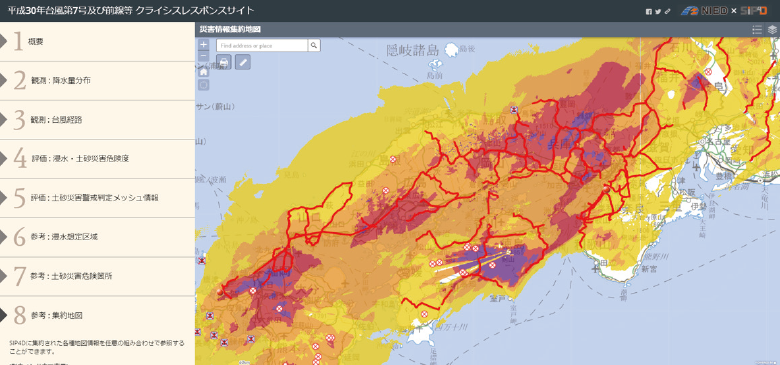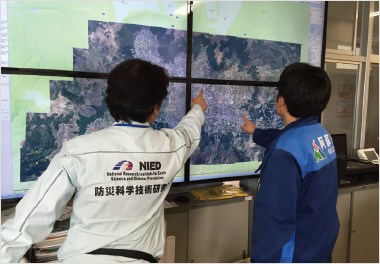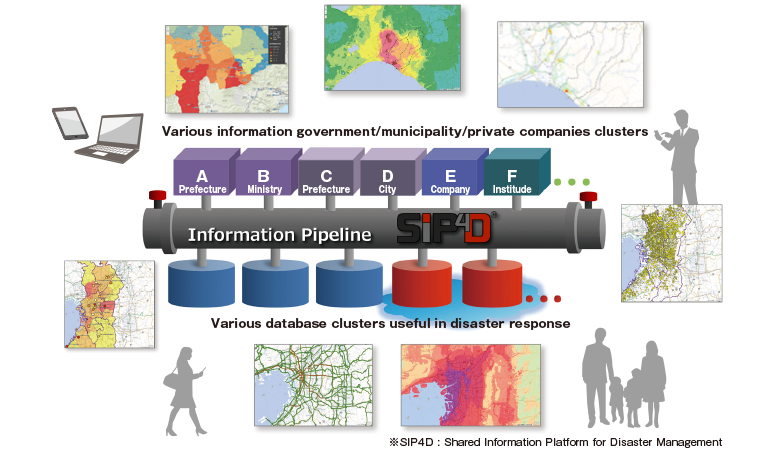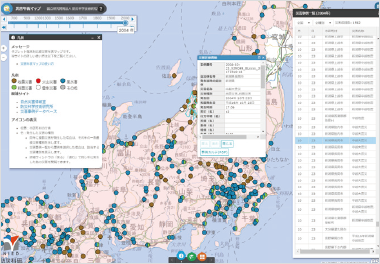Center for Comprehensive Management of Disaster Information
Concentrating knowledge (information), and becoming empowered by it

Japan has experienced a great many disasters throughout history. However, it is too often the case that these experiences are not known, not used on, meaning that today the same experiences occur again and again. Experience and sharing of knowledge are crucial. During non-disaster settings it is important to share information regarding past experiences and future projections, while during times of disaster we need to share the information about the current state of damage as well as for responding effectively. This Center agglomerates the disaster-related information to render it into knowledge, for each of the phases that society is concerned with: preparedness, response, and recovery.
We aggregate information during disasters, visualize it, and then send it out! NIED’s Crisis Response Website (NIED-CRS)
-
NIED operates the NIED Crisis Response Site (NIED-CRS) with the aim of creating a common operational picture during disasters. This website aggregates information related to each respective disaster – overview of disaster, extent of damage, information for response (road blockages, water supply stations etc.) – and then transmits it in a form that is visually understandable.
 Visualizing the conditions on a map supports swift response at the crisis site.
Visualizing the conditions on a map supports swift response at the crisis site.
Deployment of “SIP4D” to handle the foundational distribution of disaster management information
Smooth disaster response heavily relies upon appropriately sharing the necessary information with relevant organs and then responding based on this information having gained a common situational awareness. SIPD (Foundational Disaster Management Information Distribution Network) serves as a connecting rod between the disaster related information systems operated by government ministries, municipalities and relevant organizations and bodies, playing the vital role as a pipeline that makes it possible to use and apply information in an integrated manner.

The Knowledge Network Emanating from the Disaster Information Library!
We also operate the “Disaster Chronology Map” to inform about disasters throughout history.
The Disaster Information Library collects and transmits all sorts of materials regarding natural phenomena, and is also creating a digital repository. Under a treaty with the National Diet Library, a system has been constructed to allow mutual browsing/search, and initiatives implemented to organize information distributed throughout disaster resilience centers located in libraries and universities across Japan, with the aim of preserving materials in each area. Through collaboration with bodies and organizations all over Japan, the library aims to formulate a “Knowledge Network”. We are also creating a database containing cases of disasters all over Japan for the last 1600 years, together with a “disaster timeline map” that is overlaid on map that is publically available.
-
Disaster Chronology Map

-
Disaster Information Library

In order to render the past, present and future of disasters into information that cam be unsparingly used for disaster management, our center aims to render past disaster records, current disaster conditions and future disaster predictions into information that can be comprehensively utilized.
Director-General USUDA, YuichiroEffectively achieving this depends upon systems for gathering all the records and experiences that are scattered around the country, systems for the swift sharing of the current conditions during a disaster, and systems capable of handling in a cross-cutting manner the numerous research results that differ for each type of disaster. To achieve this, close cooperation is indispensible between people, organizations and their networks. This Center aspires to serve as the nucleus for realizing a society where information can be used for disaster management to the fullest extent possible.

